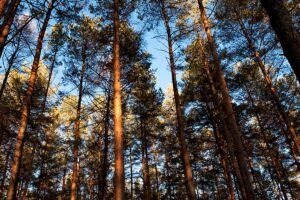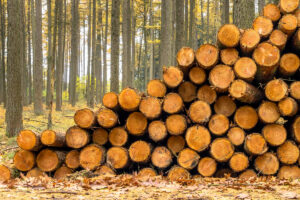Investors and shareholders like stock dividends and bond yields. They represent cash distributions to reinvest or live on. They also represent an opportunity cost relative to alternate uses for that money. Consider Warren Buffett and Berkshire Hathaway. The company pays no dividends (dividend yield = 0.00%). Rather, shareholders gladly leave generated cash in the hands of Warren and Uncle Charlie for use in other value-creating projects. In the ten years following the 2007 recession, shareholders earned a 10% annual compounded rate of return in exchange for this confidence.
As we prepare for Wood Flows & Cash Flows, Forisk’s annual conference on December 5th in Atlanta, how could we think about risks in the current market?
Quantifying Risk
Given the current investment environment, I worry about how investors price risk into certain assets and markets. This temptation to embrace urgency manifests itself in valuations. For example, if you have an urgent need to park capital, you can “buy your way” into an asset or market through lowering return expectations via lower discount rates, which raises valuations and offered prices. This applies to stocks, bonds and real assets, such as land and timber.
What is the math? If an investment pays $1 per year and I expect a 10% rate of return, I would willingly pay $10 [$1/.1 = $10]. If I settle for a 5% rate of return, I would pay $20 [$1/.05 = $20]. We see this in bond yields as investors move capital around the globe. Higher valuations reflect in part a greater “urgency” for getting capital placed and parked in sleep-enhancing places.
We observe this in timberland investments and forest products markets, and this accounting for risk is undergoing a deep rethink to better account for carbon markets and climate change and changing weather, fire, immigration and demographic patterns. In the forest industry, Forisk research affirms how timberland investors and wood-products manufacturers prioritize place over time in getting capital to the “best” timber markets and wood baskets.
Research ranking timber markets in the South and Pacific Northwest uses physical facts tied to forest supplies, wood flows, manufacturing capacity and infrastructure. Regardless housing markets and economic growth, some markets will generate more cash and with less risk than others. And capturing this value relies more on the skill and performance of our forest and procurement managers than on the budgets and forecasts of our economists. We either know how things work on the ground or we don’t. And when we do know, we are better positioned to make things happen.
This content may not be used or reproduced in any manner whatsoever, in part or in whole, without written permission of LANDTHINK. Use of this content without permission is a violation of federal copyright law. The articles, posts, comments, opinions and information provided by LANDTHINK are for informational and research purposes only and DOES NOT substitute or coincide with the advice of an attorney, accountant, real estate broker or any other licensed real estate professional. LANDTHINK strongly advises visitors and readers to seek their own professional guidance and advice related to buying, investing in or selling real estate.










Well said Brooks – indeed some localized land and timber markets always have the “baked in” inherent capacity to outperform and create greater returns. Good point recognizing the fact that certain market values can only be captured through performance of operational folks that have the skills & experience to execute on behalf of their investors. Budgets & forecasts are ultimately just false predictions if not well strategized and executed.